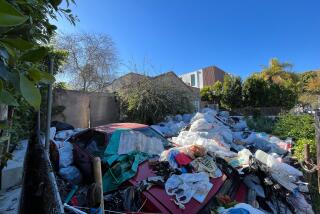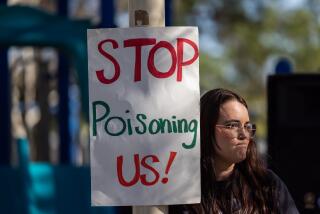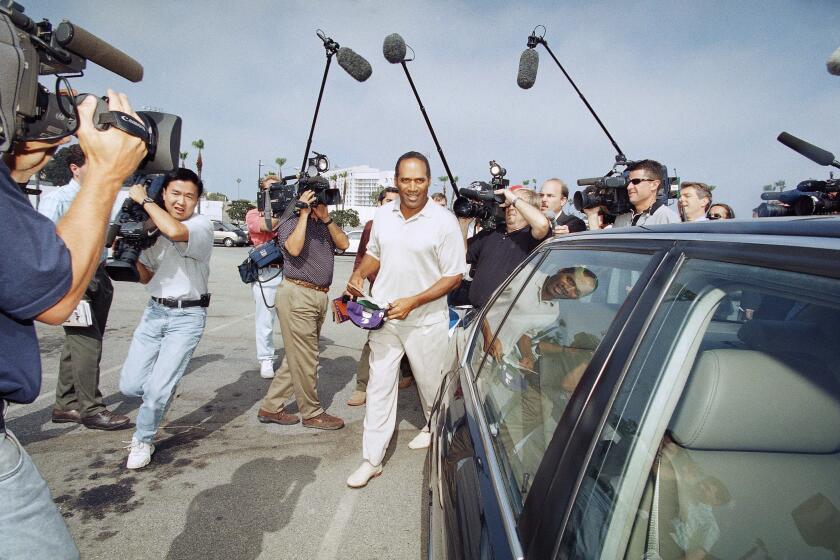Stop trashing L.A.
An ambitious city-funded trash cleanup in an eastern swath of Los Angeles recently netted 400 tons of garbage, ranging from littered candy wrappers to couches tossed into alleys. The effort, spearheaded by Councilman Gil Cedillo in his Council District 1, is a promising start at tackling what seems like a simple matter but turns out to be a vexingly difficult, widespread problem for which a permanent solution is elusive.
There are areas of Council District 9, for instance, that are such regular dumping grounds that it became a key issue in the recent council district election. For the last three months, a similar, if smaller-scale, cleanup has been taking place one Saturday a month in the 9th District, which stretches from the tony L.A. Live on its northern edge down into the poorest, bleakest neighborhoods of South Los Angeles. Council member Curren Price, who represents the area, has created a task force of officials from various city agencies and representatives of nonprofit organizations to help his district cope with the problem. He and his staff have gone out, accompanied by volunteers and sanitation workers, to different problem spots in the district to pick up all manner of trash and debris; discarded furniture and even abandoned cars have been removed. His office estimates that they picked up 10 tons of trash over the first two cleanup days.
Hopefully, these cleanups will continue on a regular schedule in these districts and wherever else they are needed. But it takes money to do industrial-size cleanups, and the city should not have to rely solely on volunteers. Even more important, city officials and residents need to do what they can at the front end to end the epidemic of littering that has left sidewalks scattered with food trash, clothing and furniture. Cleaning up is all well and good, but the real solution is to stop the dumping in the first place.
Some of the heavy debris and furniture dumped in the more desolate alleys is believed by city officials to be the work of private trash haulers trolling for spots in the middle of the night where they can dump refuse, illegally, for free, unseen. Solving this will require the help of law enforcement.
The more careless trashing of streets that residents themselves do should be attacked head-on with campaigns to make people aware of their responsibility. Cedillo is also urging people who need a heavy item picked up from their property to call the city in advance, rather than put out an old sofa or mattress and have it on their lawn for days. Price’s office staff says residents become more engaged by simply seeing a brigade of volunteers descend on their streets.
This is not just an issue of aesthetics; it also concerns public health and economic development. What business wants to locate in a garbage-strewn corridor? How can housing values rise if trash lines the streets? It’s time to address this important quality-of-life issue aggressively.
More to Read
A cure for the common opinion
Get thought-provoking perspectives with our weekly newsletter.
You may occasionally receive promotional content from the Los Angeles Times.






